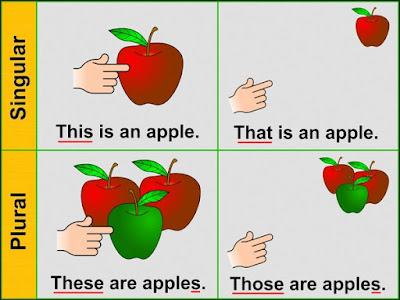Манифестиаи Пронума - The Demonstratives
Demonstrative pronouns point to things, people and whatever in the discourse. They are used as qualifiers (adjectives) or as true nouns.
They come in two flavors: presentive and absentive.
The Presentive demonstratives are used for things, people and whatever when present in the same "scene" where the speaker is., e.g., you would use these for things or people you can see in the space you are:
| Demonstrative Noun |
Demonstrative Adjective |
Meaning | Example |
|---|---|---|---|
| кесе (kese, "this") |
кес (kes, "this") |
for things or people nearer to the speaker |
кесе да аутом. this is my car. кес ауто да ака. this car is red. |
| сесе (sese, "that") |
сес (ses, "that") |
for things or people nearer to the listener |
Микер сес хонт бридарех хоплиза. Please, bring that book to me. |
| хесе (hesе, "that") / есе (esе, "that") |
хес (hes, "that") / ес (es, "that") |
for things or people far from both |
Хесе да Сусаннак аутой. That is Susan's car. Хес ауто да ао. That car is blue. |
The Absentive demonstratives are used for things, people and whatever outside (absent) the same "scene" where the speaker is., e.g., you would use these for things or people you can NOT see in the space you are, i.e., for things beyond your sight:
| Demonstrative Noun |
Demonstrative Adjective |
Meaning | Example |
|---|---|---|---|
| селе (sele, "this") |
селес (seles, "this") |
for things or people (which are absent) said as nearer to the listener |
Селес ому на ги. This idea feels good. Селе да Chrissy. This is Chrissy. |
| хеле (helе, "that") / еле (elе, "that") |
хелес (heles, "that") / елес (eles, "that") |
for things or people (which are absent) said as far from both |
Хелес ому на ги. That idea feels good. Хеле да Chrissy. That is Chrissy. |
Well, it's enough for today. Bye (:)


Comentários
Postar um comentário